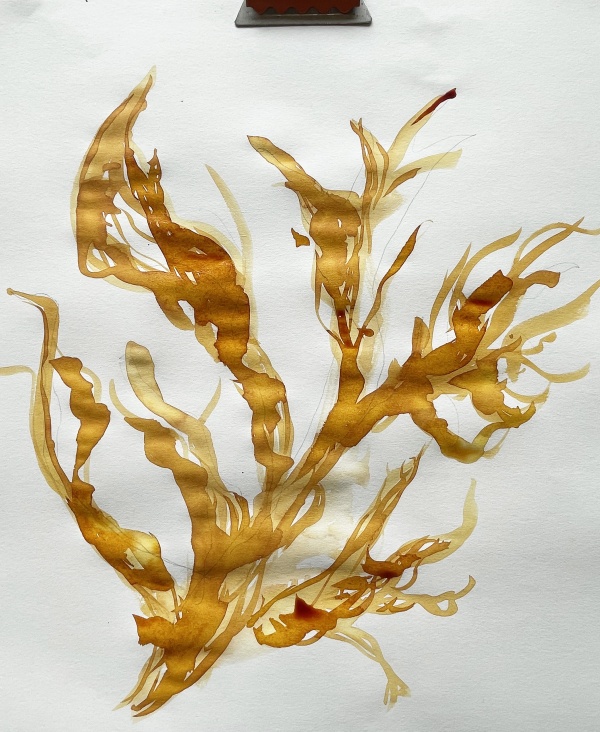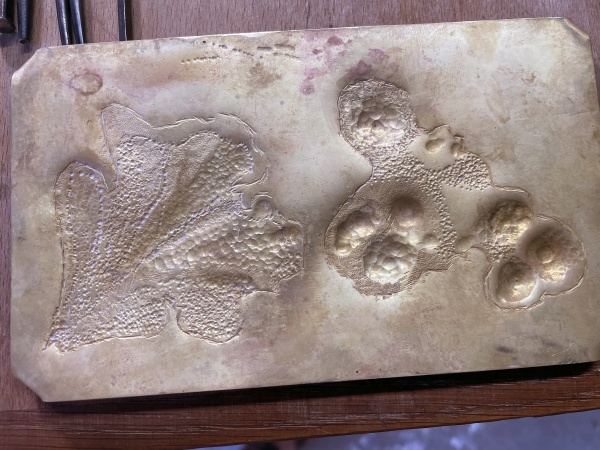Incumbo, cultural summer workshop
from July 22nd to 26th 2024 pesselières oil factoryIncumbo
Looking at the soil and lichens
A week of workshops led by Karine Bonneval, visual artist, and Mehdi Harzallaoui, chiselling craftsman, as part of the Été Culturel programme and in collaboration with the Friends of Pesselières.
We explored Pesselières and the surrounding area, looking for lichens and soil. We'll start by observing lichens and interpreting them using techniques that combine know-how and science, in operations that will bring us a little closer to alchemy.
Portraits of lichens
As Vincent Zonca says in his book Lichen, pour une résistance minimale: covering nearly 8% of the earth's surface, lichen is a living creature that should be familiar to us. Yet it is so discreet that it seems insignificant, invisible. But the closer we get to it, the more we discover its beauty, its mysteries and its strange power of attraction. Half-alga, half-mushroom, it could well revolutionise our conception of living things and reshape our imaginations... It is part of what is known as "neglected biodiversity", which is estimated to represent 80% of the planet's species.
Lichens are a common sight in Pesselières, but if you look closely, you'll see that they are unusual organisms because they are the product of a symbiotic relationship. They colonise trees, soil and rocks, but are not parasites. Their diet of mineral elements is strange, as are their shapes.
Recognising
Armed with magnifying glasses, we looked at lichens in situ, trying to capture their unique beauty. With the help of specialist books, we learned to recognise them: lichens on soil, trees or rocks. A micro universe of infinite forms that we've taken the time to meet.
Represent
This observation exercise, which requires patience and curiosity, has given rise to gestures and traces of the structures and shapes that make up these hybrid beings: ink traces, outdoor drawings, using branches as improvised pencils. Drawings in the wild, which allow us to recognise the shapes and become familiar with the structures that will initiate the creation of chiselled motifs. Tame these micro landscapes.
Chiselling
The drawings were used as a basis for transferring onto metal, tracing and chiselling several wish medallions. Each ex-voto is traced and set in cement. The whole creative process is brought into play here, from observation to conceptualisation, finding the right gestures with the right chisels, and the right shapes for each project.
The metal lichens will then be cut using a boc-fil, using traditional jewellery-making techniques, and shaped, filed, patinated and drilled.
Portraits of soils
We leaned over the ground to listen with a bioacoustic sensor to the more or less dense movements of the invertebrates that inhabit it.
Each person was invited to bring a sample of the soil that was dear to them, to create a portrait of it.
In a transformation akin to alchemy, the organic and chemical compounds in the soil were revealed in coloured strata by diffusion on a round filter. Soil chromatography is a process that uses sodium hydroxide and silver nitrate in very dilute solution. Invented in the 1950s by Pfeiffer for biodynamic use, the soil solution diffuses over a period of two days by capillary action on a prepared scientific filter. Once the layers have been absorbed by the paper, the filter is exposed to light for a week to fix the colours. Using the silver photography process (silver nitrate/light), we obtain portraits of the soil revealed.
Using sensors to listen to the earth, we listened to the activity of invertebrates in the soil around the oil mill.
To support the portraits, and to show them off to best advantage in the exhibition that followed the workshop, we made supports from papier-mâché earth. Once dry, these flat discs will be mounted on wooden rods to form an 'elevation' of some of our region's soils for visitors to the Tour de Vesvre dovecote to see.
We ended the week's workshop with a visit to the Millérioux oil mill, which welcomed us.





















